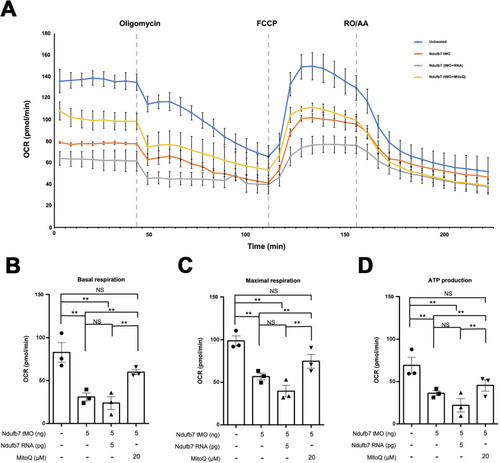Fig. 7
- ID
- ZDB-FIG-250304-7
- Publication
- Chen et al., 2025 - NDUFB7 mutations cause brain neuronal defects, lactic acidosis, and mitochondrial dysfunction in humans and zebrafish
- Other Figures
- All Figure Page
- Back to All Figure Page
|
Knockdown of Ndufb7 reduces the oxygen consumption rate. We treated one-cell stage zebrafish embryos without or with indicated Ndufb7 translational-blocking morpholino oligonucleotides (tMO), and Ndufb7 mRNA or Mitoquinone mesylate (MitoQ) as described in Fig. |
| Fish: | |
|---|---|
| Condition: | |
| Knockdown Reagent: | |
| Observed In: | |
| Stage: | Prim-5 |

